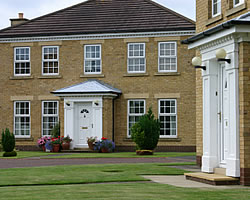 One of the more unpleasant aspects of any house purchase is paying Stamp Duty Land Tax (“SDLT”). It is usually far and away the biggest outlay in any house purchase. According to statistics released by Aberdeen Solicitors Property Centre, the average house price in Aberdeen in 2011 was £208,398. This would attract SDLT of £2,083. Further up the housing ladder, SDLT payments can reach eye watering levels. In a recent residential purchase transaction here at James & George Collie, SDLT of £165,000 was paid.
One of the more unpleasant aspects of any house purchase is paying Stamp Duty Land Tax (“SDLT”). It is usually far and away the biggest outlay in any house purchase. According to statistics released by Aberdeen Solicitors Property Centre, the average house price in Aberdeen in 2011 was £208,398. This would attract SDLT of £2,083. Further up the housing ladder, SDLT payments can reach eye watering levels. In a recent residential purchase transaction here at James & George Collie, SDLT of £165,000 was paid.
As taxes go, Stamp Duty – the forerunner of SDLT - has a more colourful history than most. Stamp Duty may have cost the UK its biggest asset. The introduction of The Stamp Act 1765 to the colonies is acknowledged as one of the main causes of the American Revolution which took place just 10 years later. For the American republicans this was the last straw, and riots and revolution ensued. There has never been Stamp Duty in America. It seems the scars have never healed.
For the government SDLT is really the perfect tax. It is collected by solicitors on their behalf and all the form filing is done by the solicitor and the client. The costs of administration must be minimal in comparison to other taxes.
And what happens if you don’t pay it? Then your solicitor can’t register your title and you won’t get the keys. There is really no point or future in being an SDLT “refusenik”.
SDLT is also a very good earner for the government. In 2009/10, a year of deep recession for property sales, SDLT receipts in Scotland came to £249m and in the UK to £4.885 billion. In recent years SDLT receipts in both Scotland and the UK have been roughly equal to the amount raised by Capital Gains Tax and Inheritance Tax put together.
There are however changes afoot. Under The Scotland Act 2012, SDLT in Scotland will be abolished. In a major move by Westminster the powers to raise tax on land and buildings have been devolved to the Scottish Government. SDLT will be replaced in April 2015 with a new land and buildings transaction tax which has already got its very own acronym – LBTT. The Scottish Government is currently consulting about LBTT but the indications are that it will be a progressive tax based on value. That is no different from SDLT but it is likely the extreme effect of banding for SDLT on residential transactions will be mitigated. At present, a purchase at £249,000 yields SDLT of £2,490 at 1%. A purchase at £251,000 is charged at 3% and yields SDLT of £7,530. The Scottish Government wants to do something about this anomaly. Another suggestion is that purchases at less than £180,000 are to have no tax which should stimulate the lower end of the market. On the other hand, it is likely that properties at the higher end will attract high levels of LBTT. All should be revealed towards the end of this year.
Property professionals and The Law Society of Scotland have given a cautious welcome to the overhaul. Our view at James & George Collie is that anything which will simplify land taxes on house purchase or commercial transactions and promote fairness is to be supported.
For further information or advice, please contact Forbes McLennan by telephone on 01224 581581 or by email at This email address is being protected from spambots. You need JavaScript enabled to view it.
